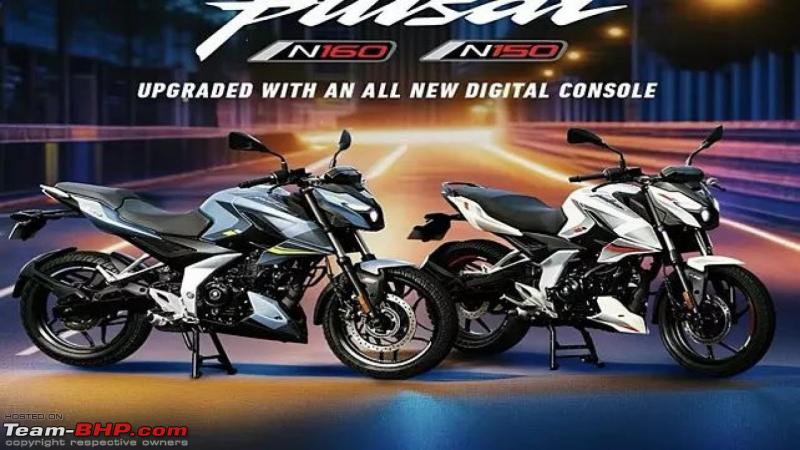The lineup ranges from 125cc to 400cc, with 150cc, 160cc, 200cc, 220cc and 250cc in between – totalling 7 different engine displacement capacities.
BHPian CrAzY dRiVeR recently shared this with other enthusiasts:
Bajaj recently launched the Pulsar N 125 in the Indian market. While a new Pulsar variant is hardly a surprise, what came as a shock to me is that Bajaj now has 17 variants of the Pulsar in production. Yes, 17 variants!
The lineup is so diverse that it:
- Ranges from 125cc to 400cc, with 150cc, 160cc, 200cc, 220cc and 250cc in between – totalling 7 different engine displacement capacities.
- Uses six different letters to demarcate different body styles – plain old Pulsar, F, N, NS, RS, and NS Z.
- Has three different body styles in the 125cc class, with two body styles across most segments.
- Has 3 generations of products co-existing under the same sub-brand
As of November 2024, the Pulsar lineup listed on the Bajaj website and their corresponding prices are as follows:
125cc
- Bajaj Pulsar 125 Neon – 81,843/-
- Bajaj Pulsar 125 Single Seat – 92,883/-
- Bajaj Pulsar 125 Split Seat – 97,133/-
- Bajaj Pulsar N 125 LED Disc – 94, 707/-
- Bajaj Pulsar N 125 LED Disc BT – 98, 707/-
- Bajaj Pulsar NS 125 – 1,01,050/–
150cc
- Bajaj Pulsar 150 SD – 1,10,419/-
- Bajaj Pulsar 150 TD – 1,15,418/-
- Bajaj Pulsar N 150 – Rs 1,24,730/-
160cc
- Bajaj Pulsar N 160 Dual Channel ABS – 1,33,408/-
- Bajaj Pulsar N 160 Dual Channel ABS with USD – 1,39,693/-
- Bajaj Pulsar NS 160 – 1,47,206/-
200cc
- Bajaj Pulsar NS 200 – 1,58,976/-
- Bajaj Pulsar RS 200 – 1,74,419/-
220cc
- Bajaj Pulsar 220 F – 1,38,560/-
250cc
- Bajaj Pulsar N250 – 1,51,910/-
400cc
- Bajaj Pulsar NS 400Z – 1,85,000/-
Are they spreading the Pulsar brand way too thin?
The sales figures contradict that argument though, so Bajaj may be doing something right after all – the figures for September 2024 alone are as follows.
- Pulsar 125cc – 78,590 units
- Pulsar 150cc – 31,881 units
- Pulsar 160 + 200 NS – 19,655 units
- Pulsar 220 – 6,880 units
- Pulsar NS 400Z – 2,122 units
- Total Sales for brand Pulsar in September 2024 = 1,39,128 units
Putting things in perspective – that’s half of the brand Activa! So they definitely are doing something right. But is it sustainable?
Are things going in the right direction for the brand Pulsar? Is the strategy just to retain buyers despite cannibalism between the products of the same range? Is it time for Bajaj to bring back a sub-brand for some of these machines – Maybe the Discover?








Here’s what BHPian GTO replied:
Quite an analysis, thanks for sharing! This is more like “Pulsar” becoming a brand in its own right, and not being a sub-brand anymore. Just like “Maruti” can sell cheap hatchbacks & 20-lakh rupee Hybrids successfully, and Samsung can sell cheap 10k phones & expensive 1-lakh rupee Flip phones, Bajaj wants “Pulsar” to have enough recognition on its own, where it is able to sell 125 cc commuter bikes, as well as the bigger 160 – 200 NS range.
But it clearly has limitations, going by the sales figures of the 400Z and even 220. Those figures seem tiny for a motorcycle. Is my understanding correct?
I don’t agree with such a vast spread of model-based sub-brands. Sub-brands should stand for something, and not be everything to everyone. In the car world, we have model-names being used for more than 1 car (e.g. Innova, Dzire), but their positioning is not vastly different. E.g. the Dzire Tour is the old Dzire used for cabbies, while the Innova Crysta is the same old formula, primarily targeting commercial owners, while still not being cheap.
Tata had played this game with the Indica & Indigo; different generations, an endless spread of variants, hatchback / sedan / compact sedan / station-wagon and what not…they smartly rationalized it with time.
Here’s what BHPian SmartCat replied:
Going by the list, those 17 variants are actually just 10 – the rest being just minor feature additions.
I think one of the reasons why Bajaj does this is because unlike cars, bikes don’t take up too much showroom space or warehouse space. Logistics costs for all stakeholders is unlikely to be significant. I also suspect it doesn’t cost much to launch a new “variant” from R&D point of view.
For the customer, it is equivalent to buying a custom bike:
- Choose brand (Pulsar)
- Choose style (commuter/sports/fairing)
- Choose features (dual channel ABS, USD forks etc)
- Choose engine size (big drop-down list)
Here’s what BHPian Chetan_Rao replied:
Bajaj used to have a clean model/variant spread. CT100 type bikes at entry level, Discover one up from there, and Pulsar as their ‘premium’ line.
The Pulsar moniker was diluted the day a Pulsar 125 and a Discover 150 came into existence. All downhill from there.
Pulsar used to evoke a ‘Ah, that one!’ sentiment (the blue shade on the 180 at launch was drool-worthy).
Now it’s ‘which one?’and nobody can really tell for sure anymore.
Check out BHPian comments for more insights and information.








